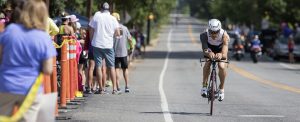By: Dr. Bob Murray, Managing Principal at Sports Science Insights and advisor to HOTSHOT
If you are checking into our product, which is scientifically proven to treat and prevent exercise associated muscle cramps, we don’t have to convince you that exercise is crucial to healthy life. You likely spend as much time running, cycling, or swimming as you do at any other task in a given week. However, exercise is more than a means to an end. Those hours you spend training your body, working yourself to exhaustion to shave a fraction of a second off your personal record—that work you put in to create a better athlete is doing more than improving performance. It is improving your body and mind in ways you may not even realize.
It is a given that exercise helps keep your weight in check. But, as Dr. R. E. Sallis points out in the British Journal of Sports Medicine, exercise also plays a huge role in the prevention of chronic diseases such as diabetes, hypertension, depression, dementia, and even certain types of cancer. Even things we assume are just part of aging—like reduced muscle mass and strength—can be significantly offset by a lifestyle that includes exercise according to a 2012 study published in the Journal of Gerontology.
We asked Drs. Bob Murray and Tom Wessel, the former a much-sought-after expert in the field of sports science and the latter a board certified and highly-regarded neurologist, for their thoughts on exercise as a form of medicine and how it improves life and body beyond the ways we typically expect.
Dr. Murray answered, “Athletes understand the value of training for improving performance, but exercise also has important benefits to long-term health, especially as we grow older. Regular exercise is pleiotropic, a fancy way of saying that exercise produces more than one effect on overall health. Research shows that those who are physically active at least 150 minutes each week have a longer life expectancy and a better quality of life. That’s easy to understand because being physically active reduces cardiovascular disease, high blood pressure, diabetes, certain cancers, and the risk of falling.” Great news for you, athletes! All these hours of training will not only improve performance today, but will help ensure a rewarding and active life for years to come.
Further highlighting the importance of exercise, Dr. Wessel noted that the medical and sports science fields now broadly accept the concept that exercise is medicine. He remarked on the importance of exercise for maintaining muscle mass as we age. “It’s important to exercise regularly. Otherwise, the muscles gradually atrophy form disuse.” As a neurologist, Dr. Wessel noted, “More recent research shows that exercise is important for brain health, as well. Staying in good physical shape may serve as a powerful intervention to improve cognitive function, reduce the risk for Alzheimer’s disease, and alleviate depression.” That sounds great! But, how can exercising the body do so much for brain health? Dr. Wessel explains, “Work from several labs suggests that certain proteins like FNDC5 are released by the exercising muscle, especially during endurance sports, and act directly on the brain to trigger the production of proteins like BDNF. BDNF has a powerful role in supporting mature neurons and may even generate new nerve cells in the adult brain.”
#ITSTHENERVE doesn’t only want to see you break your own records and cross more finish lines without cramps. We want to help you stay active in and out of race season. We want to eliminate cramps so that you never slow down. Exercise—training and pushing your body for a better you—is real medicine.
MORE ON THE HOTSHOT BLOG
5 Best Stretches for Swimmers: Add these to your regimen.
Carbs and Protein: 7 tips for proper intake for optimal fuel.
HOTSHOT at SwimRun: Event director and triathlete Lars Finanger shares hispersonal experience with muscle cramping, and why he’s encouraging all athletes to carry HOTSHOT.

